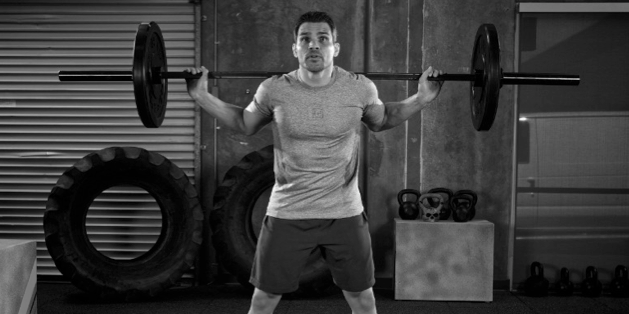All tactical athletes must squat.
It doesn’t matter if your focus is strength, muscle size, or explosive power — the squat is a fundamental exercise that will help you accomplish your goals.
Better still, there are side benefits to performing the “king of all exercises,” like improved flexibility and increased production of natural muscle-building, body-rebuilding hormones.
By the way, a proper squat has a few basic guidelines:
- Maintain a neutral spine (not overly rounded or arched) at all times
- Brace your abdomen like someone is about to punch you in the gut
- Keep your knees tracking your toes
- At the bottom of the move, drop your hips just below your knees. Don’t allow your lower back to round or your butt to tuck under
Before you put a bar on your back, perform a box jump, or do some explosive Olympic lift, you must squat correctly. Your muscles, tendons, and ligaments will thank you.
Follow these 4 technique tips to fix your squat:
1. Strengthen your core. The limiting factor in your ability to squat pain-free is often determined by the strength of your abdomen, hips, and lower back.
Do this: Prone plank. From a pushup position, bend your elbows 90 degrees and rest your weight on your forearms. Maintain a straight line between your shoulders, hips, knees, and ankles. Hold for two minutes, take a 30-second break, and then repeat.
2. Stretch your shoulders. If you’re squatting with a bar on your back, tight shoulders make it tough to engage your lats throughout the exercise. So you’ll compensate by rounding your upper back, dropping your chest, and falling forward.
Do this: Doorway chest stretch. Stand with your arm against a doorframe. Pull your shoulder-blade back and down, like you’re squeezing something between your shoulder-blades. Push your shoulder joint back and turn your head in the opposite direction. Hold for 30 seconds and repeat on both sides.
3. Ditch your running sneakers. The squishy heel design of your typical “jogging” shoe reduces power and causes instability.
Do this: Grab a pair of minimal shoes instead. look for an 8-mm forward angle drop from heel to toe. They’ll make a big difference in your form and keep you safer.
4. Widen your stance. If you can’t reach rock bottom on the squat, you probably have tight hips and ankles. A simple fix is to take a wider-than-shoulder-width stance.
Do this: Wall squat. Stand facing a wall, with your toes touching the wall and your arms hanging down in front of you. Position your heels a little more than shoulder width apart and turn your toes outward 30 degrees. Now squat as low as you can and hold at the bottom for five seconds. Repeat for 10 total reps, increasing your range of motion with each rep.
Remember that perfect practice makes perfect. If you’re serious about building tactical muscle, squats must be the cornerstone of your training plan.
Joseph Arangio is a tactical strength and conditioning coach and author of Tactical Bodyweight Workouts.
